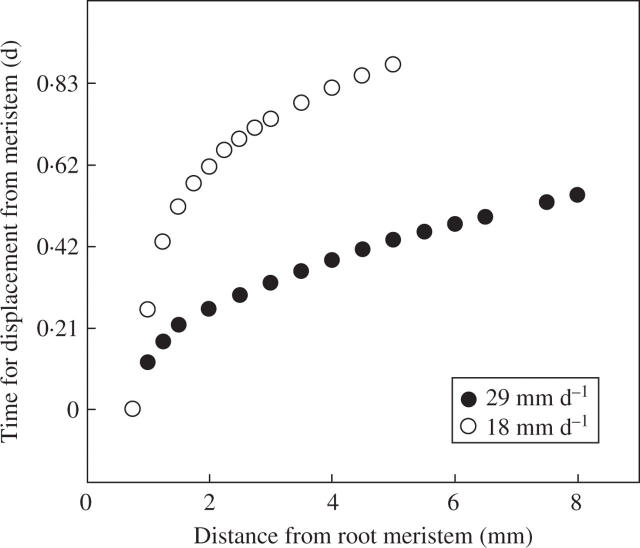Fig. 6.
The time it takes for a ‘particle’ or bacterium to be displaced from the beginning of the elongation zone to different distances from the tip of wheat seminal roots to eventually arrive at the stationary region of the root. These values were calculated from cell lengths of root tips grown in soil in rhizoboxes, frozen, planed and viewed with a cryo-scanning electron microscope (Silk et al., 1989; Huang et al., 1994). Root elongation rates were measured daily before freezing. The time the organism is bound to the elongation zone can be estimated from kinematic analyses where the organism is treated as a ‘particle’ or ‘element’ attached to the surface of the elongation zone. The particle is initially anchored 0·5 mm from the tip of the root growing 29 mm d−1, and 0·75 mm from the tip of the root growing 18 mm d−1. When the root is growing at a moderate rate of 18 mm d−1, the time to reach the stationary region is 20 h, whereas on the roots growing at 29 mm d−1 it is 12 h.

